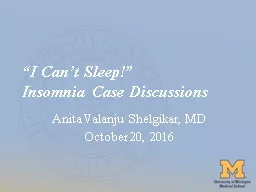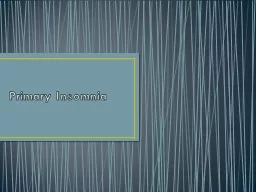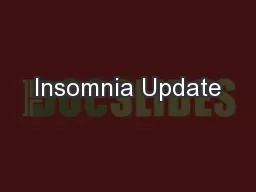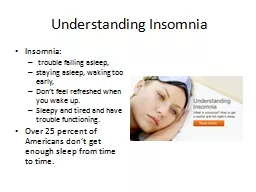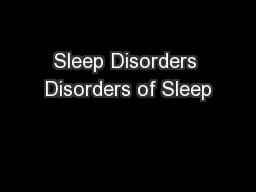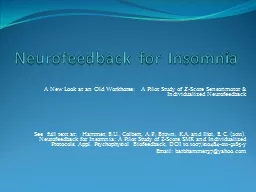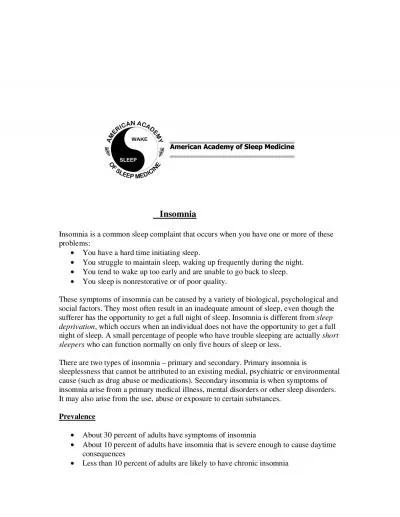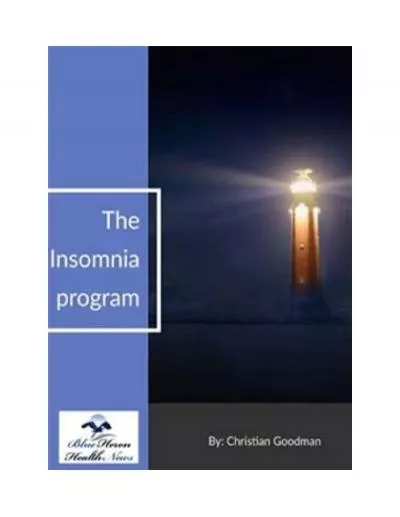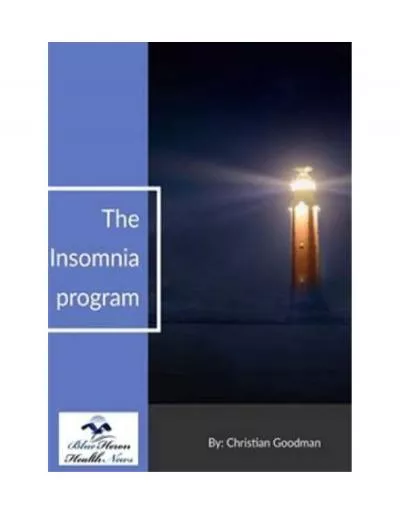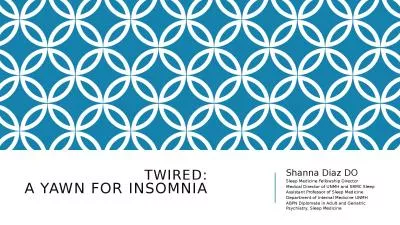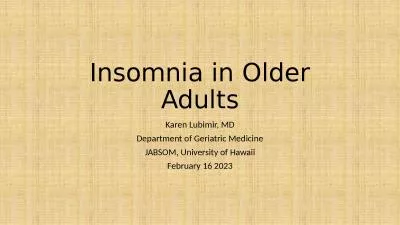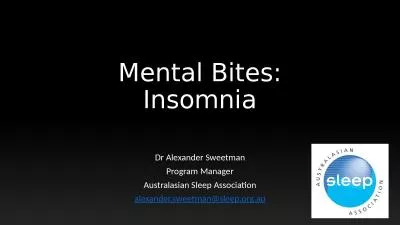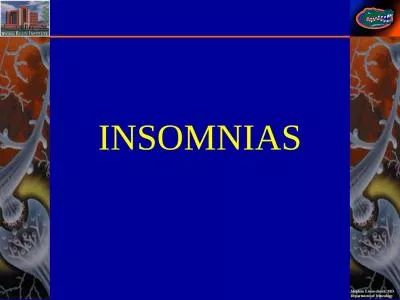PPT-“I Can’t Sleep!” Insomnia Case Discussions
Author : sherrill-nordquist | Published Date : 2018-09-17
Anita Valanju Shelgikar MD October 20 2016 Objectives Review common pharmacologic treatments for insomnia Review cognitivebehavioral therapy for insomnia Discuss
Presentation Embed Code
Download Presentation
Download Presentation The PPT/PDF document "“I Can’t Sleep!” Insomnia Case Dis..." is the property of its rightful owner. Permission is granted to download and print the materials on this website for personal, non-commercial use only, and to display it on your personal computer provided you do not modify the materials and that you retain all copyright notices contained in the materials. By downloading content from our website, you accept the terms of this agreement.
“I Can’t Sleep!” Insomnia Case Discussions: Transcript
Download Rules Of Document
"“I Can’t Sleep!” Insomnia Case Discussions"The content belongs to its owner. You may download and print it for personal use, without modification, and keep all copyright notices. By downloading, you agree to these terms.
Related Documents

